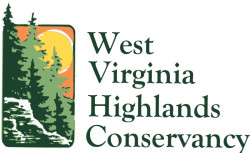October, just like every other month, has been very busy at the Conservancy and within the environmental community. With the Conservancy it was another wonderful Annual Fall Review, which once again was packed full of activities, October 18-20 at Elk River Inn and Restaurant https://elkriverwv.com/about-us/ in Slatyfork, WV.
Those of us who arrived Friday evening shared light refreshments and lively conversations.
Saturday mornings activity was a field trip to various pipeline impact locations led by Rick Webb and the Allegheny-Blue Ridge Alliance, Compliance Surveillance Initiative (CSI) team. The field trip began with a very informative pretrip briefing and then a tour of pipeline construction activities at several of the impact areas already completed. What an eye opener seeing the sites up close and personal.
Saturday afternoon and evening was filled with very informative presentations which included Restoration of Native Trout, Local Environmental Issues, When, Why, Where and How of Spruce Restoration, Going Solar, Woodcock Project-The Start of the Research Project and Management for Early Successional Habitat, The Clean Air Act and Climate Change Leave their Fingerprints on Forest Health in West Virginia and in the evening a discussion of the Environment and Energy by Delegate Evan Hansen. The Board and membership enthusiastically thanked the committee for putting together the great program. Everyone stated that they are already looking forward to next year’s Fall Review.
Sunday, we started with the annual membership meeting during which we elected the four directors-at-large recommended by the nominating committee. I want to personally thank our newest director, Ellie Bell and the three incumbent directors for volunteering for those positions. We then moved into a very productive fall board meeting. Look for Board Highlights in this issue of the Voice.
Mother Nature took her good old time painting the fall canvas on the mountains. This last week the leaves are at their peak and putting on a fantastic show. The pesky Asian Ladybugs have made their debut and have been an incredible nuisance this last week as they are looking for warm places to survive the winter. I have been told that the Gypsy Moth population collapsed in the Eastern Panhandle when we had a very wet spring and they succumbed to viruses and fungus. Let’s hope that is what is found throughout the entire state.
Land and Water Conservation Fund
Since 1964 the Land and Water Conservation Fund (LWCF) has helped West Virginia acquire and improve public land across the state. West Virginia has received nearly $240 million dollars for over 500 recreation, access, and conservation projects in 54 of our 55 counties.
LWCF has supported “wild and wonderful” icons of West Virginia like the New River Gorge National River, Monongahela National Forest, Canaan Valley National Wildlife Refuge, and our state park system and it also has helped fund local projects that contribute to our everyday quality of life in the Mountain State.
As stated in the September 2019 Voice, Congress has permanently authorized the Fund. Permanent authorization of the Fund was a big step, but it is not the final step. Current law does not require that the money that is available for the fund goes into the Fund. Congress still must make appropriations to the Fund and to date no such appropriation has been made. The future of this funding is critical for additional projects in our state and communities. Efforts are under way to convince congress of the importance of authorizing funding for Land and Water Conservation Fund. You can help by calling your representatives, asking them to support permanent full funding of Land and Water Conservation Fund. Find their contact information at https://www.senate.gov/general/contact_information/senators_cfm.cfm?Class=1 or https://www.house.gov/representatives/find-your-representative
ATV Use on Public Lands
During the September legislative interims, it was learned in the Senate Natural Resources Committee that Chairman Maynard intends to run bills allowing off-road recreation on public lands beyond what is available now.
Our National Forests provide invaluable ecological, recreational, and climate benefits. They offer habitat for thousands of wildlife species, provide opportunities for recreational activities such as camping, hiking, and fishing, supply clean drinking water to millions of Americans, and save taxpayers millions of dollars by limiting expensive roadbuilding on our cherished public lands. Our National Forests also serve as essential tools in the fight against climate change, acting as carbon sinks that store and sequester significant amounts of carbon emissions.
Despite the many benefits of maintaining intact roadless areas on public lands, and the overwhelming public support for protection of these areas, there is nationwide pressure to open public lands for such activities. WVHC has a long history of opposing such activities on public lands and we can only hope that the Forest Service will stick to their guns with the current rule that does not allow such activities in the National Forest. Recently, a rule that would have allowed ATVs on certain roads in Utah’s five national parks including popular red rock country destinations such as Zion and Arches has been scrapped by the U.S. government one week before it was set to take effect.
Those are just two of the issues that WVHC is watching. Keep watching the Highlands Voice as we report on other issues in future issues.
